Encountering Patagonia’s Original Landscape
Chile and Argentina

The vast Patagonia region stretches across Argentina and Chile at the southern tip of the South American continent. On Peace Boat’s Southern Hemisphere cruise, we call at Ushuaia, a city on the Fuego Island at the southern tip of the continent, and then we cruise through the magnificent fjords created by the passage of time. What await you are mountains soaring like needles, glaciers roaring and crashing down through the tranquil air, and rivers pouring with water melted from the glaciers. This vast area, covering approximately 1.1 million square kilometers, is a beautiful part of the earth that we have yet to see.
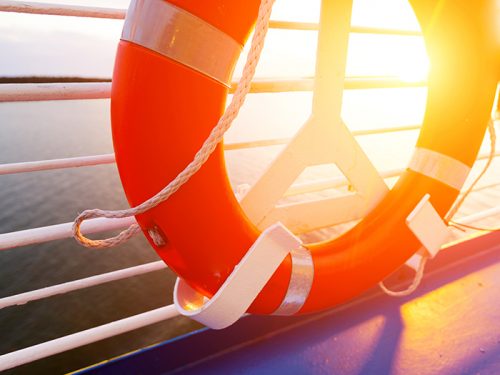
In to the Pagagonia Fjord
The Patagonia region extends south of 40 degrees south latitude on the South American continent. The name comes from the indigenous people that Ferdinand Magellan, a navigator, encountered during his travels in the region. When Magellan visited the region in 1520, he saw the large, fur-covered feet of the indigenous people and called them “pata (foot)” and “gon (big),” from which the name “Patagonia” comes. The area’s most attractive features are the rugged fjord landscapes carved by glaciers and radiance of the glaciers. Since the fjords are intricate and difficult to navigate, a fjord specialist pilot accompanies the ship when cruising to guide the course.
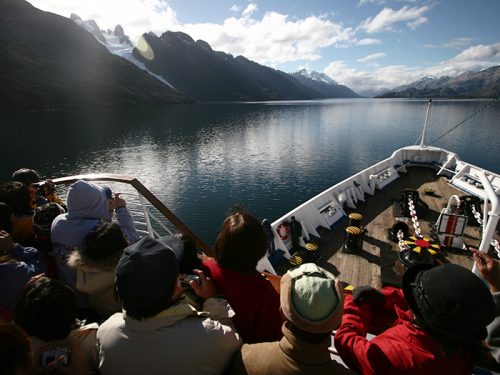
The ship moves through the narrow interior of the fjord as if threading a needle. From the deck, you will see beautiful mountains with snow capped peaks, intricate coastlines, green land, and flowing glaciers – a contrast of colors created by nature that will leave you speechless. “Ahead, on the starboard side, you can see a large glacier…” During the fjord excursion, you hear onboard announcements that tells you the highlights of the cruise. People onbord enjoy the ever-changing scenery of Patagonia as the ship moves along its course, not wanting to miss a moment of it.
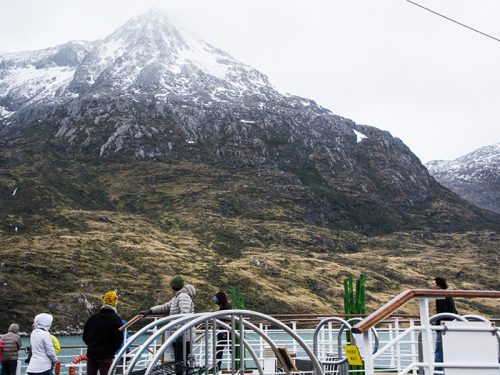
The “Pio XI Glacier,” said to be the most spectacular point in the Patagonian Fjords, approaches the ship’s path. It is an incredibly large glacier, more than four kilometers wide at its leading edge as it drops into the sea, and several dozen kilometers to the mountain where the glacier originates. As one approaches the glacier, one can see that it is made up of many layers of jagged ice. The clear blue color of the glacier, shining like a jewel from the inside, is truly a work of art created by the earth. Combined with the panoramic view of the fjords created by the complex coastline, steep mountains, and silent sea, the area is mystically beautiful.
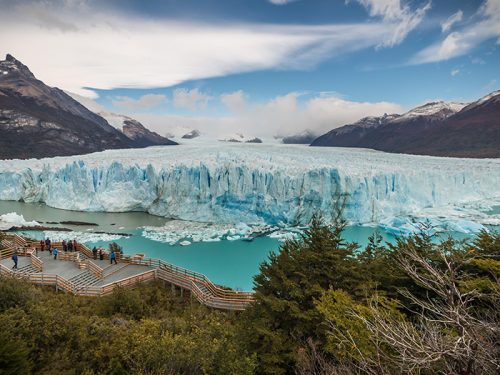
Blue Glacier, World Heritage
The vast Patagonia region extends across Argentina and Chile, and is home to a total of 30 national parks. Los Glaciares National Park, a World Heritage Site located in the southern part of Argentina along the border with Chile, is one of the best places to visit when visiting Patagonia. Los Glaciares National Park, which means “the glaciers” in Spanish, is, as its name suggests, one of the most glaciated areas in the world, with 47 large glaciers and more than 200 or 300 small glaciers. Its area is the third largest in the world after Antarctica and Greenland.
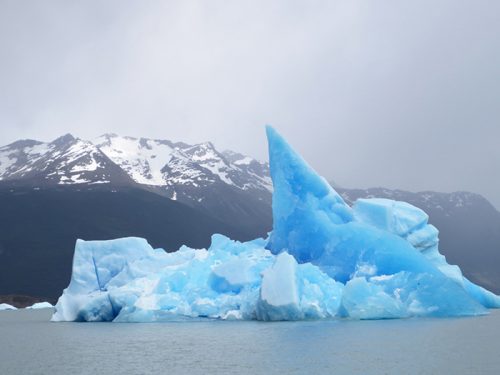
Patagonian glaciers are formed when humid winds from the Pacific Ocean hit the Andes mountains, dumping large amounts of snow, which is then pressurized and hardened over a long period of time. The area around Los Glaciares National Park has relatively high minimum temperatures in winter, which makes it easy for the ice to melt, and it moves at a fast pace as it repeatedly re-freezes.
In addition, the glaciers in this area contain very little air in their ice due to the long compression caused by the accumulated snow. The clear, bubble-free ice reflects only blue light and absorbs other colors, resulting in a beautiful blue color to our eyes.
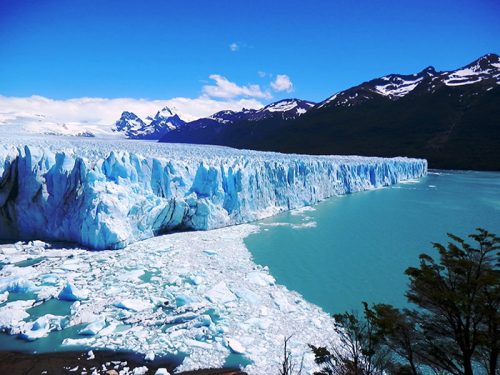
Living Glacier
Among the many glaciers in Los Glaciares National Park, the Perito Moreno Glacier, which flows into Lake Argentino, is a “living glacier” because it is so active, moving up to 2 meters per day at its center. While most glaciers continue to retreat due to global warming, Perito Moreno Glacier remains largely unchanged in size, growing and collapsing as it did more than 10,000 years ago.
The main attraction of this glacier is the massive collapse at the tip of the glacier. The dynamic spectacle of a part of the huge ice wall slowly pushed out and then collapsing into the lake with a roaring sound overwhelms everyone who visits.
PHOTO:PEACEBOAT, Katsuta Airi, Stacy Hughes, shutterstock.com
